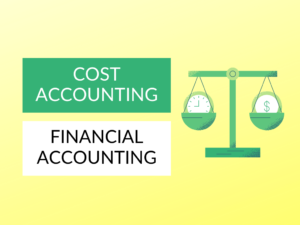CA vs CMA: Understanding the Differences
Are you confused about the difference between a CA and a CMA? Both are popular career options in the field of accounting and finance, but there are important distinctions between the two. In this article, we’ll explore what each designation entails, their uses, and their differences.
What is CA?
A Chartered Accountant (CA) is a professional accountant who has obtained the necessary certifications and qualifications in their country of residence. CAs audit financial statements, provide tax advice, and conduct other financial analysis for clients. They may work for clients in many industries, including government, nonprofit, and private sector.
Examples of CA:
– Prepare and review financial statements
– Conduct audits of business financials
– Provide tax advice and tax return preparation
– Financial management consulting
– Business valuation services
Uses of CA:
– Providing financial advice and consulting services
– Examining and reporting on financial statements for accuracy and compliance
– Ensuring legal and regulatory compliance
– Facilitating financial transactions
– Providing expert testimony in legal disputes
What is CMA?
A Certified Management Accountant (CMA) is an accounting professional who works in management accounting. Their primary focus is on providing strategic financial analysis and guidance to businesses, with an emphasis on managerial decision-making. This includes creating budgets, forecasting financial performance, and identifying cost-saving measures.
Examples of CMA:
– Creating and managing financial budgets
– Conducting financial analyses for business decisions
– Identifying cost-saving measures
– Forecasting financial performance
– Supporting strategic planning
Uses of CMA:
– Providing financial analysis for strategic planning
– Assisting with risk management assessments
– Identifying cost-saving opportunities
– Facilitating financial performance improvements
– Supporting mergers and acquisitions activities
Differences between CA and CMA:
To better understand the differences between CAs and CMAs, we have created a table with a 3-column layout. This table outlines ten key differences between the two designations, along with their difference area listed in bold font as the row header.
| Difference Area | CA | CMA |
|---|---|---|
| Primary Focus | Financial reporting and compliance | Management accounting and decision-making |
| Industry Focus | Ranges from government to nonprofit to private sector | Focuses on private sector businesses |
| Scope of Work | Audits, tax advice, financial management consulting | Financial analyses, financial forecasting, risk management assessment |
| Certification Body | National regulatory bodies, such as the Institute of Chartered Accountants in India, or the American Institute of Certified Public Accountants. | National regulatory bodies such as the Institute of Management Accountants in the United States |
| Certification Requirements | Complete an educational program and pass a rigorous exam | Complete an educational program and pass a rigorous exam |
| Areas of Expertise | Financial reporting, auditing, bookkeeping, tax preparation, and financial consulting | Financial analysis, forecasting, budgeting, strategic planning, and risk management |
| Salary Range | Median salary ranges from $29,000 to $94,000 annually | Median salary ranges from $69,500 to $139,000 annually |
| Global Recognition | Recognized in countries ranging from India, Australia, Canada, and the United States. | Recognized in countries spanning the globe, including the United States, Canada, China, and India. |
| Scope of Practice | Ability to provide a wide range of financial services, including fiduciary responsibilities, auditing, tax planning, and consulting services. | Ability to provide financial analysis, forecasting, budgeting, strategic planning, and risk management assessments for private sector businesses |
| Career Opportunities | Wide range of career opportunities in government, nonprofit, and the private sector | Primarily career opportunities in the private sector, with a focus on strategic decision-making. |
Conclusion:
In conclusion, while Chartered Accountants (CA) and Certified Management Accountants (CMA) both work within the financial sector, their responsibilities and focus areas differ. CAs focus on financial reporting and compliance, whereas CMAs focus on management accounting and decision-making. Understanding these differences can help individuals determine which path is best suited for their career goals and interests.
Knowledge Check:
1. What is the primary focus of a CA as compared to a CMA?
A. Financial reporting and compliance
B. Management accounting and decision-making
2. What type of financial analyses does a CMA typically perform?
A. Financial forecasting and planning
B. Financial reporting and compliance
3. What is the primary industry focus of a CMA?
A. Government, nonprofit, and the private sector
B. Private sector businesses
4. What is the median salary range for a CMA?
A. $29,000 to $94,000 annually
B. $69,500 to $139,000 annually
5. What type of financial services can a CA provide?
A. Financial analysis and forecasting
B. Consulting services and tax planning
6. What are the differences in certification requirements for a CA versus a CMA?
A. There is no difference
B. CA’s may take longer to complete certification requirements
7. What are the areas of expertise for a CA?
A. Management accounting and decision-making
B. Financial reporting, auditing, bookkeeping, and tax preparation
8. What type of financial activities does a CMA facilitate?
A. Auditing and tax planning
B. Financial performance improvements and strategic planning
9. What is the scope of practice for a CMA?
A. Ability to provide consulting services
B. Ability to provide financial analysis for strategic planning
10. What type of career opportunities are available for a CA versus a CMA?
A. Private sector opportunities only
B. Opportunities across government, nonprofit, and the private sector.
Answers: 1. A 2. A 3. B 4. B 5. B 6. B 7. B 8. B 9. B 10. B
Related Topics:
– CPA vs CMA: Understanding the Differences
– The Role of Accounting in Business
– Financial Planning for Individuals and Businesses.




